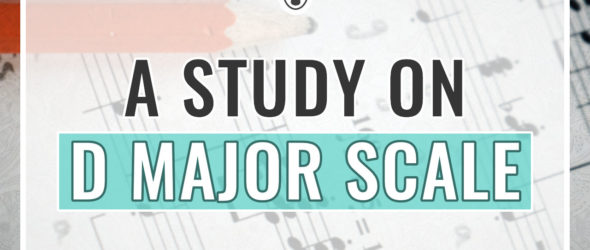The violin D Major scale is great for beginner violinists. If you’ve already learned the A Major scale, D Major has the same finger pattern!
It’s important to learn and practice scales through all stages of learning the violin, whether you’re a beginner, or if you’ve been playing for years. Scales help us solidify our intonation, learn the fingerboard, and practice common finger patterns we find in music.
Here you can download a free booklet with D major scales, arpeggios, and a bonus exercise:
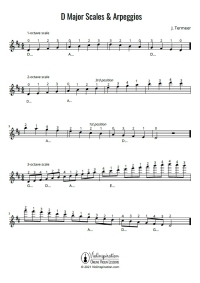
D Major Scales, Arpeggios
and a Bonus Exercise
What is the Major Scale of D?

D Major scale is a scale that starts with a note called D or “re”. Two notes in this scale are played a half step higher, so there are two sharps in its key signature. When played in tune, it beautifully resonates with the violin’s open D string.
What Are the Notes of the D Major Scale on the Violin?
The notes of the D Major scale are D, E, F♯, G, A, B, and C♯. The notes follow the Major scale pattern of whole and half steps: whole, whole, half, whole, whole, whole, half. When played in the first position, the second finger should be placed high – right below the third finger.
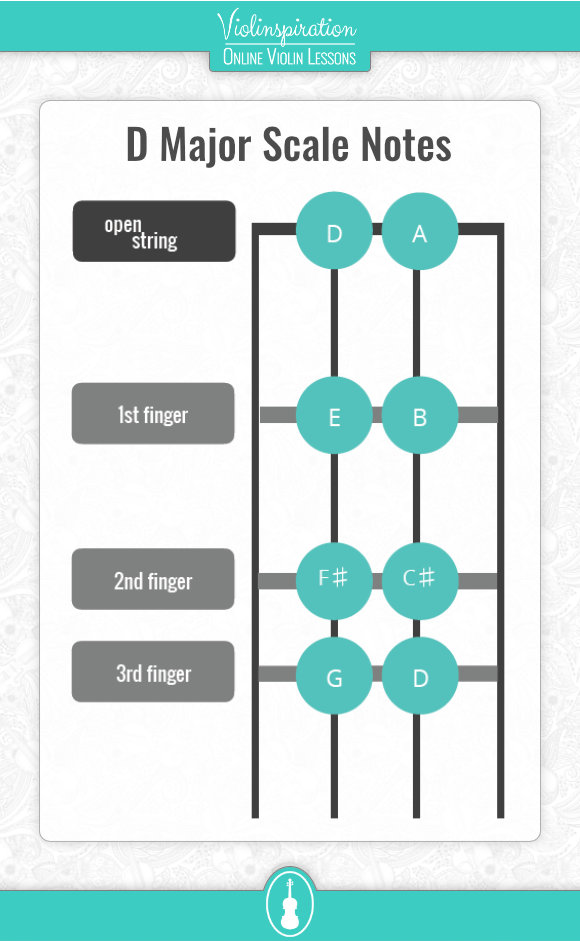
| 1st note | Tonic | D |
| 2nd note | Supertonic | E |
| 3rd note | Mediant | F♯ |
| 4th note | Subdominant | G |
| 5th note | Dominant | A |
| 6th note | Submediant | B |
| 7th note | Leading Tone | C♯ |
| 8th note | Tonic | D |
This scale is great to learn as a beginner because it will teach you one of the most common finger patterns you’ll play.
How do You Play the D Major Scale on the Violin?
The D Major scale on the violin begins on the open D string. Then, play the E note with your first finger, F# with a high second finger, and G with the third finger. Switch to the A string and play the same pattern. Next, play all the notes in reverse order.
The finger pattern is the same as the A Major scale, but this time we play on the D and A strings.
Here you can watch my video about how to play the D scale on the violin:
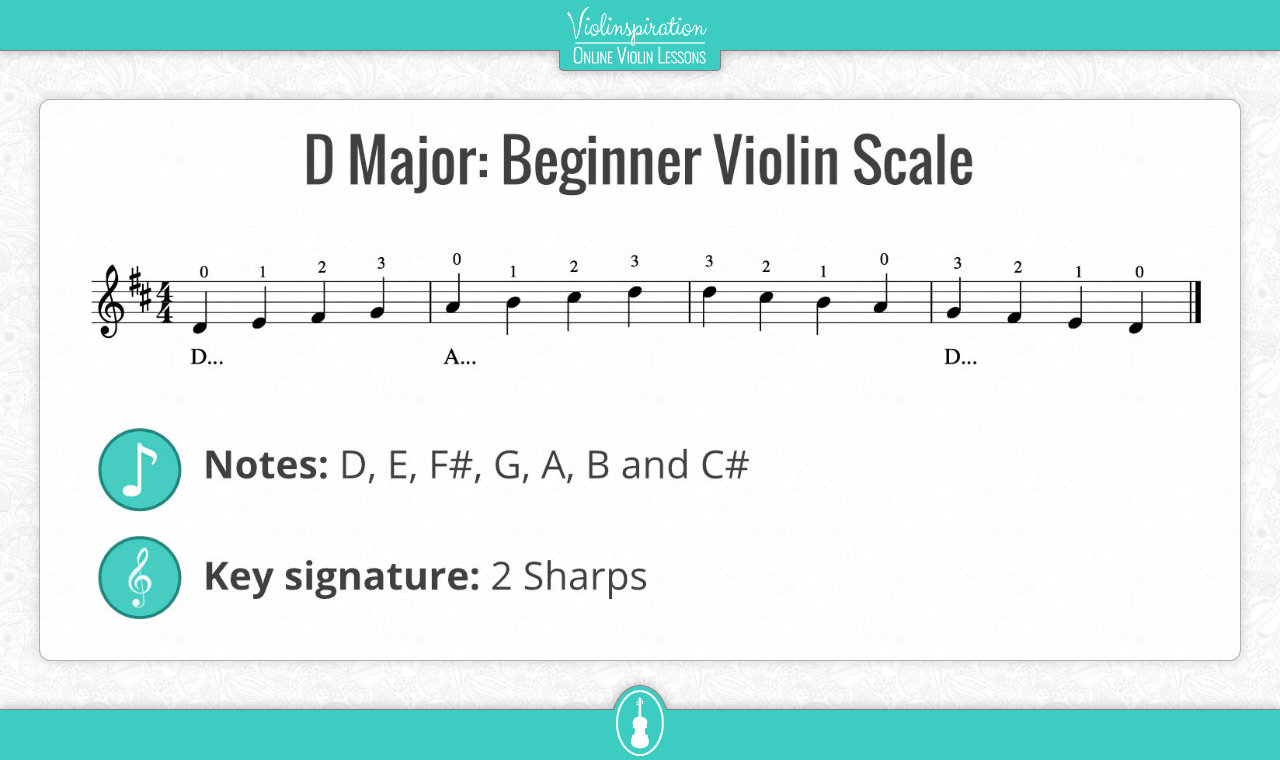
How do You Play a D Major Arpeggio on the Violin?
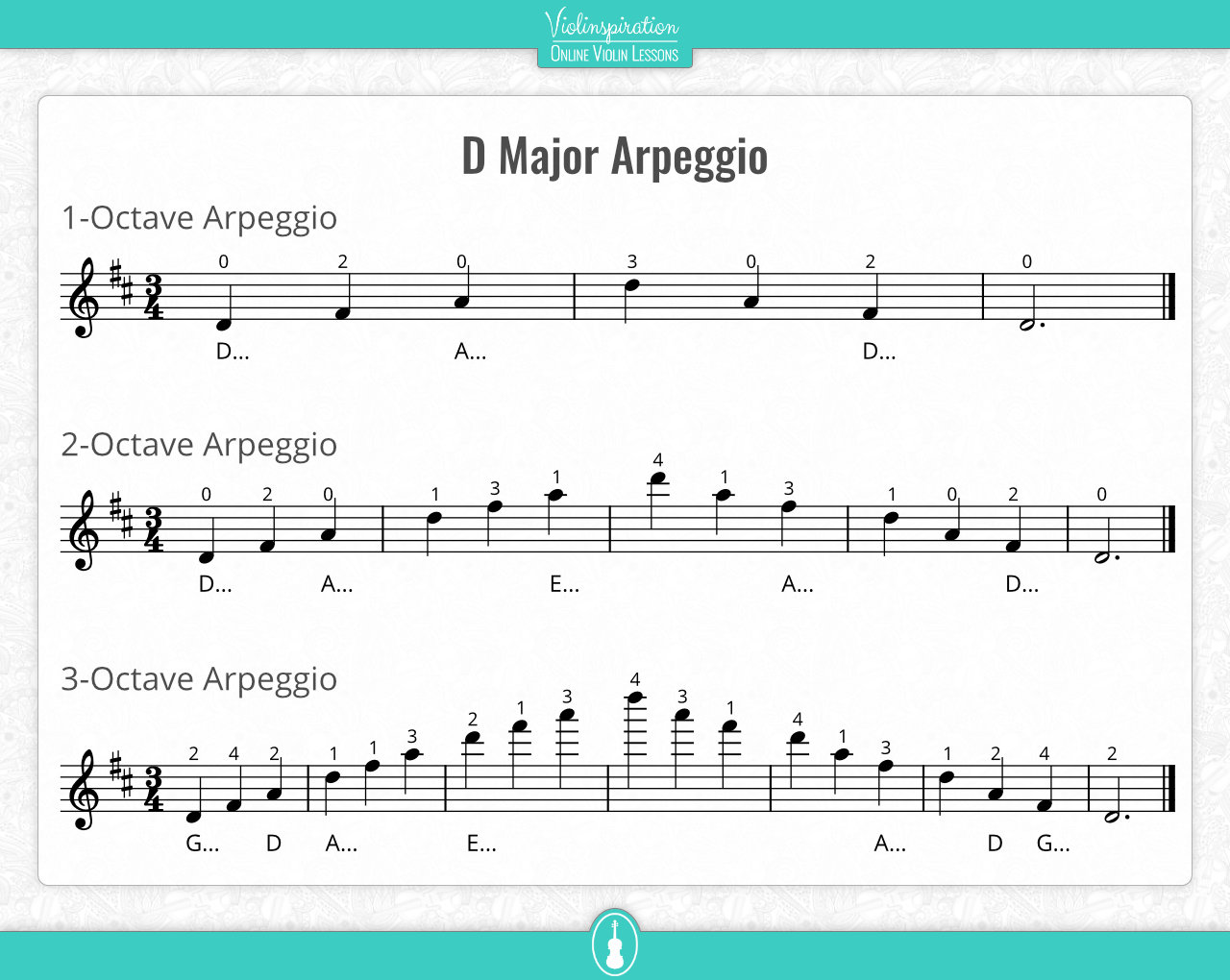
The notes in the D Major arpeggio are D, F♯, and A. To play the D Major 1-octave arpeggio, use open D string, high second finger on the D string, open A string, and the third finger on the A string. Following it, play the notes in descending order.
First, play slowly with separate bows, then slur three notes together. Once this feels easy, try slurring six notes at a time. How fast can you play your arpeggio in tune?
For an advanced challenge, try playing an arpeggio all on one string! This will help improve your shifting technique and intonation.
How do You do a Two-Octave D Major Scale on a Violin?
Playing a two-octave D scale on the violin requires one shift from the first to the third position, and then the same back down.
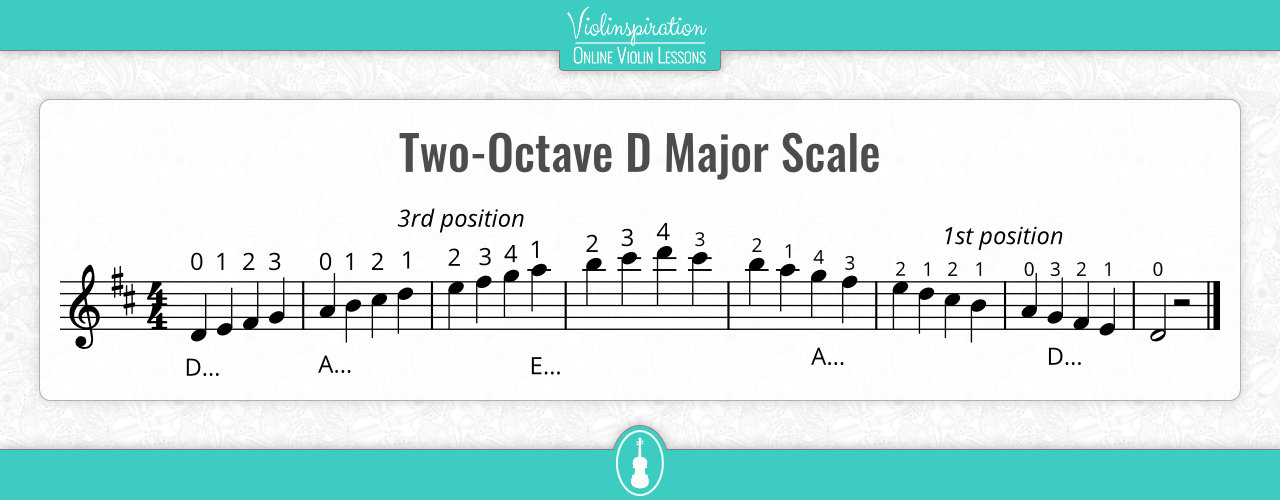
Three-Octave D Major Scale
The three-octave D scale begins in the third position on the G string and ends pretty high on the E string. If you feel that you are ready for it, follow the fingering as shown in the image below:
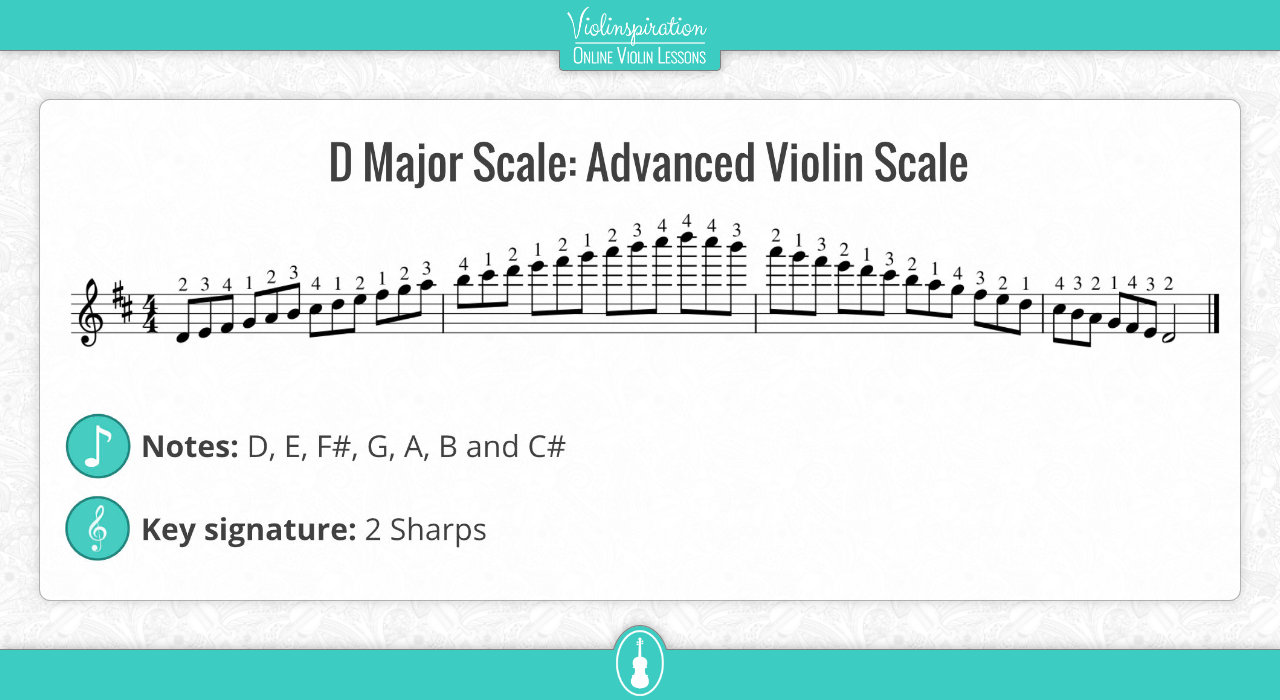
Time for Practice
To learn the scale effectively, I like to practice with an acceleration scale method created by Ivan Galamian, a very famous violin teacher.
Begin with the metronome at 60 or lower. Play one note per beat, two notes to a bow the first time you play the scale. For the next repetition of the scale, play two notes (eighth notes) per beat, four notes to a bow. On the next repetition, play three notes (triplets) per beat, six notes to a bow.
If you are a member of Julia’s Violin Academy, you can practice the scale in various ways with the play-along videos and the accompaniment app:
Beginner level
Once you are familiar with this scale, make sure to visit my Video Lessons library and check out which pieces are written in the key of D Major. Have fun learning Ode to Joy, Happy Birthday, or one of the film or pop tunes that I arranged in an easy version for you!
Five Popular Pieces in D Major
These popular pieces all contain two similarities: they are all in D Major, and none of them were popular when they were written!
Pachelbel Canon in D
You may know Canon in D as the “wedding song,” as many brides choose to walk down the aisle to this piece. It was composed between 1680-1690 by Johann Pachelbel but did not become popular until the 1970s when it was recorded. Since then, the bassline has influenced pop and rock stars like Maroon 5 and Green Day.
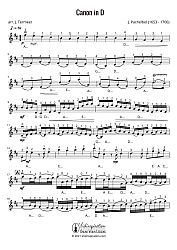
Pachelbel’s Canon in D
Free Violin Sheet Music
Beethoven Violin Concerto
Beethoven’s only violin concerto was written in a matter of weeks in 1806 and was only finished a few days before the premiere. The violinist was basically sight-reading at the first performance!
Unlike many of his other works, it was not instantly popular. Joseph Joachim, one of the most famous violinists of the 19th century, performed the concerto with Mendelssohn conducting in 1844, when the violinist was just 12 years old.
The concerto begins with four beats of solo timpani – an interesting start for a concerto from this time. It’s actually considered one of Beethoven’s more lyrical works, substituting flashy technique for beautiful moving lines. The tuning of the violin and the key of D Major give this concerto a beautiful vibrant quality, especially for the solo violin and the string sections.
Brahms Violin Concerto
Inspired by Beethoven’s Concerto, Brahms set out to write his own. He enlisted the help of Joseph Joachim to make sure the music was playable, and that he could write the sound he wanted on the violin.
The similarities between the two concertos are abundant: they’re both in the key of D, they’re both very lyrical, and they both use solo timpani! Many violinists record and perform them together, and Brahms’ Violin Concerto was even premiered right after a performance of Beethoven’s Violin Concerto.
Tchaikovsky Violin Concerto
Tchaikovsky wrote his concerto in 1878 and dedicated it to famous violinist Leopold Auer. After looking at the music, Auer called the piece “unplayable” and refused to premiere it. It took until 1881 for Tchaikovsky could find a violinist to premiere the concerto, and even then, it was met with mixed reviews.
Leopold Auer eventually came around and taught the piece to his students such as Jascha Heifetz, who then went on to make this concerto one of Tchaikovsky’s most popular and often performed pieces.
Like the other D Major concertos we’ve taken a look at, this one is also very lyrical and flowing. The key helps the violin really ring and resonate above the orchestra.
Prokofiev Violin Concerto No. 1
Prokofiev’s first violin concerto was written in 1917 but was not premiered until 1923 in Paris to a disappointed audience. The music was considered to be too romantic for their modern ears, and they did not enjoy the lyricism. Since its premiere, it has gained popularity and is performed often.
Again, this D Major concerto contains lyricism, and its key signature gives the violin a natural resonance. Chords and double stops can be played naturally in the key of D Major because the tuning of the strings is tailored to this key.
Final Note
Learning your scales, especially D Major, will prepare you for all types of repertoire, from chamber music to concertos to pop tunes. Familiar scales and arpeggios will pop up everywhere, and learning them as a beginner will lay the foundation you need to easily play the music you love.
You can download a free booklet with a scales, arpeggios, and a bonus exercise here:

D Major Scales, Arpeggios
and a Bonus Exercise
Do you want even more resources? You can download a booklet with a set of scales for your level here:
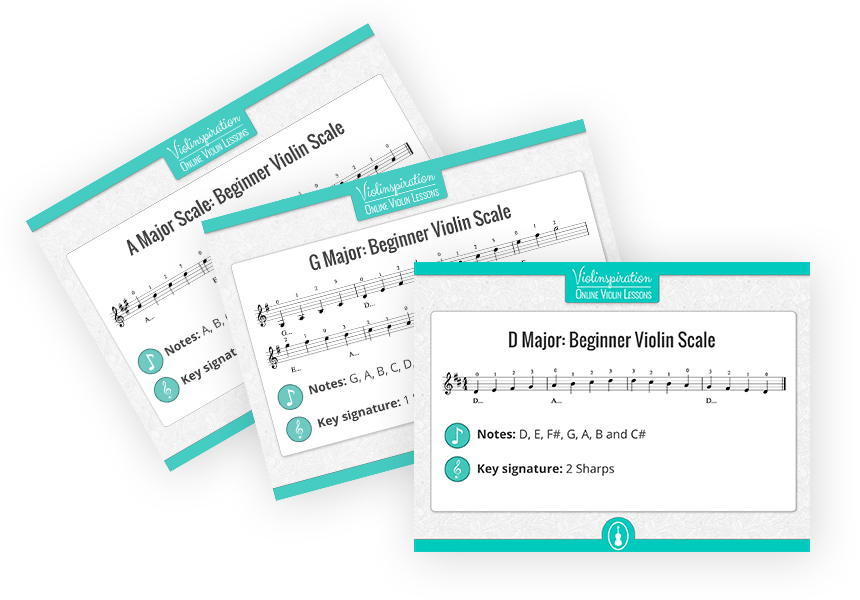
5 Most Common Violin Scales
for Beginners
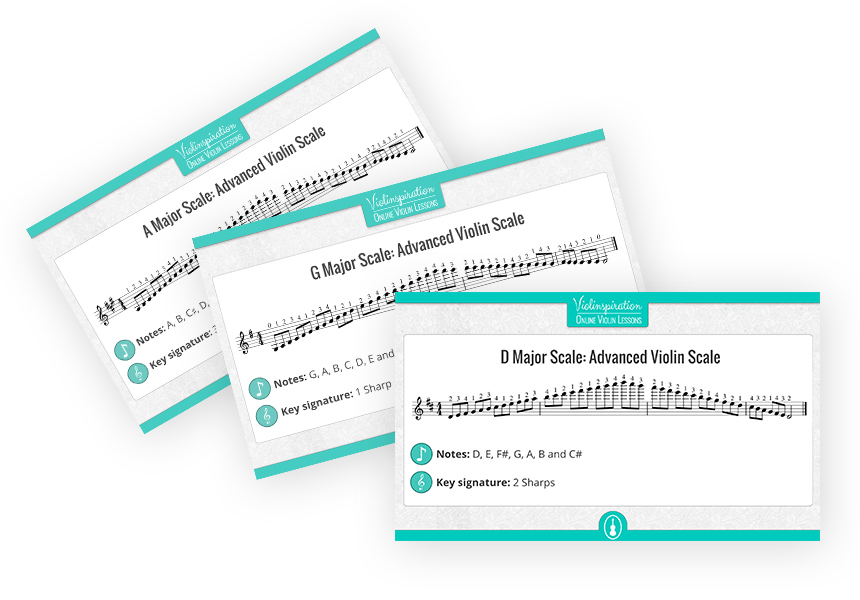
5 Most Common Violin Scales
for Advanced Player
